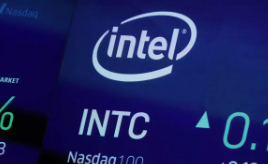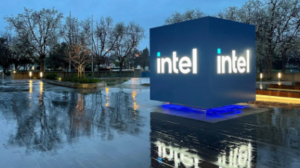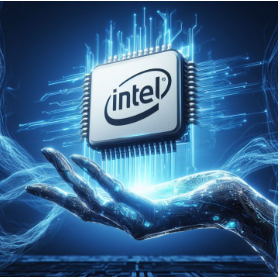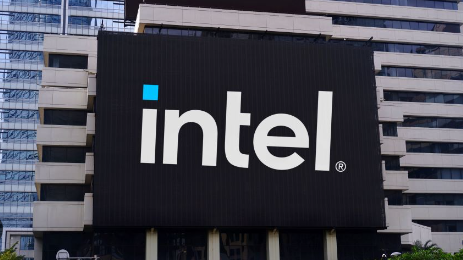Tags: Intel, Strategic Options, Pat Gelsinger, Semiconductor Industry, Nvidia, AI, Layoffs, Morgan Stanley, Lunar Lake, Foundry Business
Intel Corporation, a once-dominant force in the semiconductor industry, is actively exploring strategic options to address its ongoing business struggles. The company has engaged top financial advisors, including Morgan Stanley, to develop a plan that could involve significant restructuring, such as splitting off and selling parts of the business. These options are expected to be presented to Intel’s board of directors during a critical meeting in September.

Key Points:
- Strategic Discussions Underway: Intel has enlisted the expertise of financial advisors, including Morgan Stanley, to explore a range of strategic solutions. The options under consideration could include divestitures, restructuring, or other significant business adjustments aimed at revitalizing Intel’s market position.
- CEO Pat Gelsinger’s Leadership: Intel’s CEO, Pat Gelsinger, has been at the forefront of the company’s efforts to navigate these challenges. Gelsinger has publicly acknowledged the skepticism from investors and has outlined an ambitious turnaround strategy, emphasizing the need for Intel to operate with greater efficiency and agility.
- Competition and Market Struggles: Intel has faced mounting challenges from competitors, particularly Nvidia, which has gained a significant lead in the artificial intelligence (AI) space with its advanced graphics processing units (GPUs). As a result, Intel’s stock has declined nearly 60% this year, reflecting growing investor concerns.
- Massive Layoffs: In response to its financial difficulties, Intel announced earlier this month that it would lay off 15,000 employees. This move is part of a broader cost-cutting initiative, but it has done little to alleviate the concerns of investors who are wary of the company’s future prospects.
- Future Outlook: Despite these challenges, Intel continues to push forward with its technological advancements. The company plans to launch its next-generation laptop central processor, Lunar Lake, and has reported interest from around a dozen potential customers in its foundry business. However, the substantial investment required for this buildout remains a concern.

Intel’s efforts to explore and implement strategic options come at a critical time for the company. With the semiconductor industry rapidly evolving, the decisions made in the coming months will be crucial in determining Intel’s future trajectory.
Background on Intel’s Struggles
Intel, once the leader in the semiconductor industry, has been facing increasing competition, especially from companies like Nvidia and AMD. These companies have outpaced Intel in key areas such as AI and GPU technology, which are critical for the future of computing. As a result, Intel has seen a sharp decline in its market share and stock value.
2. Strategic Options Being Considered
- Divestitures and Business Splits: Intel is reportedly considering selling or spinning off parts of its business. This could involve shedding non-core assets or even more drastic measures like breaking up the company into separate entities.
- Operational Efficiency: CEO Pat Gelsinger has emphasized the need for Intel to become more nimble and efficient. This could mean further cost-cutting measures, streamlining operations, or adopting new business models to stay competitive.
- Focus on Core Competencies: There might be a strategic shift to focus on Intel’s strengths, such as its CPU and semiconductor manufacturing capabilities, while potentially exiting less profitable or non-strategic areas.
- 3. Impact of Competitors
- Nvidia’s Dominance: Nvidia has emerged as the leader in GPUs, which are crucial for AI applications, gaming, and data centers. Intel’s inability to compete effectively in this space has been a major factor in its decline.
- AMD’s Rising Influence: AMD has also gained ground on Intel, particularly in the CPU market, where it has released products that outperform Intel’s offerings in both consumer and enterprise segments.
- 4. Investor Sentiment
- Investor confidence in Intel has waned due to its failure to capitalize on emerging trends like AI and its delays in launching new products. The massive layoffs and restructuring efforts signal that the company is trying to address these issues, but the market remains skeptical about the effectiveness of these measures.
5. Intel’s Technological Roadmap
- Lunar Lake Processor: Intel’s next-generation laptop processor, Lunar Lake, is expected to be a significant product release. However, whether it will be enough to regain lost market share is uncertain.
- Foundry Business Expansion: Intel is attempting to expand its foundry business, which involves manufacturing chips for other companies. This could be a growth area if Intel can secure significant contracts, but the capital expenditure required is substantial.
- Broader Industry Implications
Intel’s challenges are emblematic of the broader shifts in the semiconductor industry, where traditional CPU dominance is being challenged by new computing paradigms focused on GPUs, AI, and specialized processors. How Intel adapts to these changes will be critical not just for the company, but for the entire tech ecosystem that relies on its products.
Pat Gelsinger’s Leadership
Since returning to Intel as CEO, Pat Gelsinger has been tasked with turning around the company. His strategy involves both immediate cost-cutting measures and longer-term investments in technology and manufacturing. His ability to execute this vision is under intense scrutiny.






